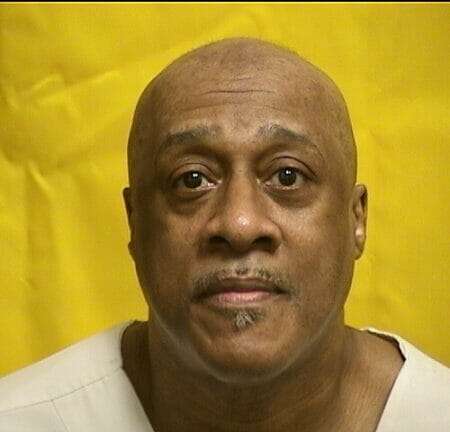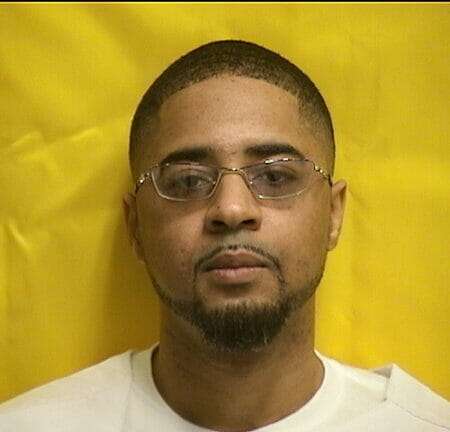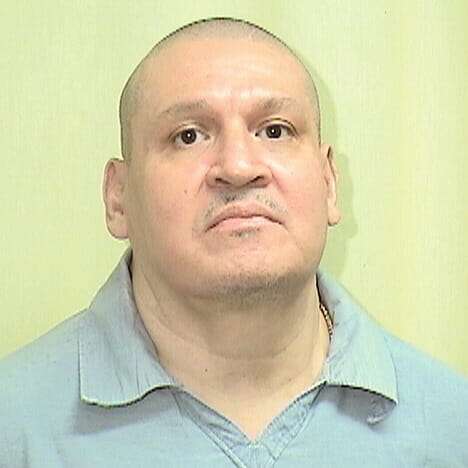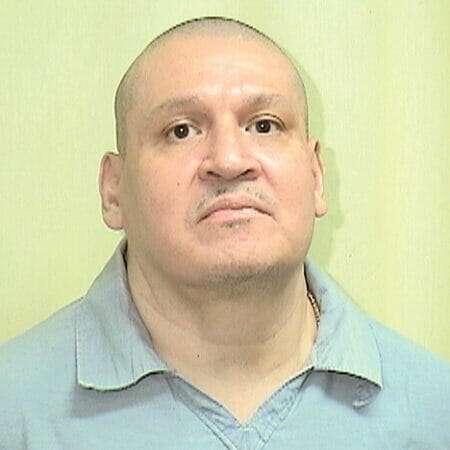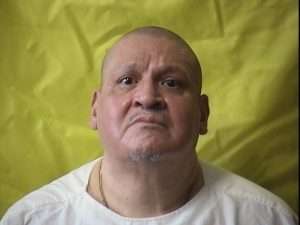Stanley Fitzpatrick was sentenced to death by the State of Ohio for three murders. According to court documents Stanley Fitzpatrick would murder his girlfriend and her twelve year old daughter. Two days later he would murder a neighbor who live across the street with a hatchet. Stanley Fitzpatrick would be arrested, convicted and sentenced to death.
Ohio Death Row Inmate List
Stanley Fitzpatrick 2021 Information
ppellant, Stanley Fitzpatrick, murdered his girlfriend, Doreatha Hayes, her 12-year-old daughter Shenay, and a neighbor, Elton Rose. While leaving the crime scene, he attempted to kill a police officer. Fitzpatrick pleaded guilty to three counts of aggravated murder with death specifications. He appeals his convictions and death sentence.
{¶ 2} Prior to the murders, Fitzpatrick lived with Doreatha and Shenay Hayes at 867 Chicago Avenue in the village of Lincoln Heights. On Thursday, June 7, 2001, Fitzpatrick killed Shenay and Doreatha. On June 10, 2001, he confessed these crimes to his cousin Marvin Thomas.
{¶ 3} Fitzpatrick told Thomas that 12-year-old Shenay had come home and caught him smoking crack. Fitzpatrick claimed that Shenay had attacked him with a knife and was accidentally stabbed in the ensuing altercation. The coroner later testified that Shenay had been stabbed three times in the back of the neck and once near her ear.
{¶ 4} As Shenay gasped for breath, Fitzpatrick ran into the next room. A few minutes later, he came back and struck Shenay repeatedly in the head with an ax handle, fracturing her skull, “so that he wouldn’t hear the sounds that she was making.” At some point, Fitzpatrick wrapped a ligature around Shenay’s neck. Nevertheless, according to Fitzpatrick, she was still “making sounds” when Fitzpatrick wrapped her in a blanket and a carpet and put her in a bedroom closet. Shenay died of the combined effect of the stab wounds, blows to the head, and strangulation.
{¶ 5} Later that evening, Fitzpatrick beat Doreatha Hayes to death. He told Marvin Thomas that, after Doreatha came home, “we got into it as usual.” Fitzpatrick said that during the argument, he hit her in the head with an ax handle or an ax. She fell to the floor, and he hit her repeatedly in the face. When Doreatha stopped making noises, Fitzpatrick moved her body to another bedroom and placed a mattress on top of it.
{¶ 6} An autopsy showed that Doreatha had at least 13 “chop wounds”: five on her head, five on her left forearm, one on her right wrist, and one on each hand. Doreatha’s wounds were consistent with her having been struck with State’s Exhibit 12, a hatchet that police later found in the basement of 867 Chicago Avenue. Blood on the hatchet, and on a hammer also found at 867 Chicago Avenue, had a DNA profile matching Doreatha’s.
{¶ 7} At approximately 10:30 p.m. on June 9, Fitzpatrick walked across Chicago Avenue and rang the doorbell of Elton and Betty Rose. Looking through the window, Mrs. Rose recognized Fitzpatrick standing on her front porch, and, calling through the door, she asked him what he wanted. Fitzpatrick said, “[I]t’s Doreatha’s boyfriend. * * * Doreatha would like to see your husband. She said to tell him to come over to the house.” Mrs. Rose summoned her husband, Elton Rose (“Rose”). Rose went across the street with Fitzpatrick and entered 867 Chicago Avenue, where Fitzpatrick killed him.
{¶ 8} Rose died from lacerations of the brain caused by blunt-impact injuries to his head. He sustained numerous lacerations and skull fractures caused by at least ten separate blows to the back and right side of his head. These injuries were consistent with Rose having been struck with the blunt side of State’s Exhibit 12, the hatchet. Blood on the hatchet had a DNA profile consistent with Rose’s.
{¶ 9} Five or ten minutes after he had left with Rose, Fitzpatrick rang the Roses’ doorbell again. He told Mrs. Rose, “[Y]our husband wants you to come across the street.” When Mrs. Rose asked why, Fitzpatrick had no answer, and Mrs. Rose did not believe him, so she said, “[G]o tell my husband to come to the door.”
{¶ 10} Fitzpatrick turned away from Mrs. Rose. He appeared to be “looking around * * * to see if there was anyone watching him.” Suddenly, he “took off,” back across the street.
{¶ 11} Just then, at 10:50 p.m., Sergeant Deangelo Sumler of the Lincoln Heights Police Department drove up in his cruiser. Sumler had been dispatched to 867 Chicago Avenue in response to a “silent 911” call. Sumler saw Mrs. Rose and noted that she looked “distraught,” so he pulled over to talk to her.
{¶ 12} Mrs. Rose pointed out Fitzpatrick standing on the sidewalk in front of 867 Chicago Avenue. Fitzpatrick approached Sumler and said, “[C]ome on in, he needs some help.” Sumler asked Mrs. Rose what was going on. She replied, “[M]y husband is over there.” Fitzpatrick repeated that “he needed some help” and ran inside 867 Chicago Avenue. Sumler followed Fitzpatrick into the house.
{¶ 13} When he went in, Sumler saw Fitzpatrick pointing a .38-caliber revolver at him. Although Sumler had not drawn his gun, Fitzpatrick told him to drop it. Sumler raised his hands. He then backed up to the door, pushed it open, and ran outside. Fitzpatrick fired twice at Sumler.
{¶ 14} Sumler sought cover behind a large metal trash container. Fitzpatrick came out, aimed at Sumler, and fired a third shot. Sumler fired back. Fitzpatrick then got into Sumler’s cruiser and drove off.
{¶ 15} Fitzpatrick abandoned the stolen cruiser after driving into some bushes. He then entered the home of Montika Pitts. When Pitts encountered him inside her home, she asked what he wanted. Fitzpatrick’s response was to scream at Pitts and then grab her throat. They scuffled, and Fitzpatrick shoved Pitts outside. When Pitts re-entered her home, to protect her child, who was asleep in the house, Fitzpatrick fled. Later, Fitzpatrick robbed Marjorie Duff of her car at knifepoint. He then fled in Duff’s car, which was later found abandoned in Cincinnati.
{¶ 16} As mentioned previously, on June 10, 2001, Fitzpatrick confessed to committing the murders to his cousin Marvin Thomas. Thomas then called the Hamilton County Sheriff’s Department. He told a detective that Fitzpatrick was in a motel in Sharonville, Ohio.
{¶ 17} Police officers went to Fitzpatrick’s motel room and spoke with him through the door. Fitzpatrick eventually surrendered. Duff’s car keys were found in Fitzpatrick’s room.
{¶ 18} Later that day, Detective Patrick Dilbert interviewed Stanley Fitzpatrick at the Hamilton County Sheriff’s Department. Fitzpatrick waived his Miranda rights and agreed to speak with Dilbert. Fitzpatrick told Dilbert that “he’d been up for several days smoking crack,” that he lived at 867 Chicago Avenue, and that he had been either fired, suspended, or placed on probation by his employer on June 5.
{¶ 19} A grand jury indicted Stanley Fitzpatrick on one count of aggravated murder under R.C. 2903.01(C) (child murder) and two counts of aggravated murder under R.C. 2903.01(A) (prior calculation and design). Each aggravated murder count carried a single death specification. The specification to Count One (the Shenay Hayes murder) alleged that Fitzpatrick had purposefully caused the death of a person who was under the age of 13 and that Fitzpatrick had been the principal offender. See R.C. 2929.04(A)(9). The specification to Count Two (Doreatha Hayes) alleged that the murder was part of a course of conduct involving the purposeful killing of or attempt to kill two or more people. See R.C. 2929.04(A)(5). The specification to Count Three (Elton Rose) also alleged a course of conduct. The indictment also included one count of attempted murder (Deangelo Sumler), two counts of aggravated robbery (Sumler’s cruiser and Marjorie Duff’s car), and one count of aggravated burglary (Montika Pitts’s residence).
{¶ 20} Fitzpatrick initially pleaded not guilty. He requested a jury trial, and a jury was seated. However, during the defense’s opening statement, Fitzpatrick decided to change his plea to guilty. Counsel recommended against a guilty plea, but Fitzpatrick told counsel that if they did not stop the proceedings, he would.
{¶ 21} Fitzpatrick’s remarks to the trial judge made clear his insistence on pleading guilty:
{¶ 22} “What I told you, I want it done. I don’t want to wait till no lunch or the next day or nothing.
{¶ 23} “* * *
{¶ 24} “I told them what I wanted to happen, and that save you some tax money or whatever, you know. * * * Seriously. Tell the jury or whatever, they don’t have to go through this, be cut right down. * * * You ain’t got to sit here and put my family through this * * *, you know.
{¶ 25} “* * *
{¶ 26} “This is-just make it over with, man.
{¶ 27} “* * *
{¶ 28} “I just told you what I wanted to do. I plead guilty. I killed them, but I don’t remember what happened to Doreatha and Shenay.”
{¶ 29} Defense counsel informed the court that the defense had discussed Fitzpatrick’s competence with two psychiatrists and a psychologist, and had reviewed medical records from two other psychiatrists. The defense was unable to find any basis to assert that Fitzpatrick was incompetent.
{¶ 30} After Stanley Fitzpatrick signed a jury waiver, the jury was discharged and a three-judge panel was selected. The panel went over each count in the indictment with Fitzpatrick, explaining the maximum sentence for each charge. The court explained to him that by pleading guilty, he would waive his rights to a jury trial, to confront witnesses before a jury, to present witnesses in the guilt phase, and to hold the state to its burden of proving guilt beyond a reasonable doubt to a jury, and his privilege against self-incrimination. The court noted that Fitzpatrick would be entitled to confront witnesses that testified for the prosecution, present witnesses in a penalty phase (if there was one), and that the prosecution would have to prove to the three-judge panel that he was guilty beyond a reasonable doubt of the aggravated murders and specifications. Fitzpatrick said he understood the court’s explanations, had consulted with his counsel, was satisfied with his counsel’s work, and wished to plead guilty. The court then allowed him to withdraw his earlier plea and enter a plea of guilty to all counts and specifications in the indictment.
{¶ 31} The state then presented evidence, as required by R.C. 2945.06 (“If the accused pleads guilty of aggravated murder, a court composed of three judges shall examine the witnesses, determine whether the accused is guilty of aggravated murder or any other offense, and pronounce sentence accordingly”). See State v. Green (1998), 81 Ohio St.3d 100, 689 N.E.2d 556. Witnesses included Detective Dilbert, Sergeant Sumler, Betty Rose, Montika Pitts, Marjorie Duff, and Dr. Robert Pfalzgraf, Chief Deputy Coroner of Hamilton County. Also testifying were Anthony Barner, who was Shenay Hayes’s father, and Deputy Sheriff David Linder, an evidence technician.
{¶ 32} The panel found Stanley Fitzpatrick guilty of all charges and specifications. The panel then held a mitigation hearing. The state reintroduced its evidence from the plea hearing. Fitzpatrick presented three witnesses and made an unsworn statement, and the state called one rebuttal witness. After the mitigation hearing, the panel sentenced Fitzpatrick to death.
https://caselaw.findlaw.com/oh-supreme-court/1287283.html
